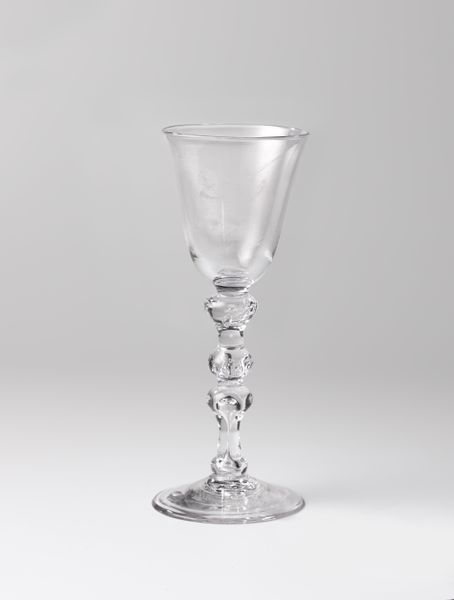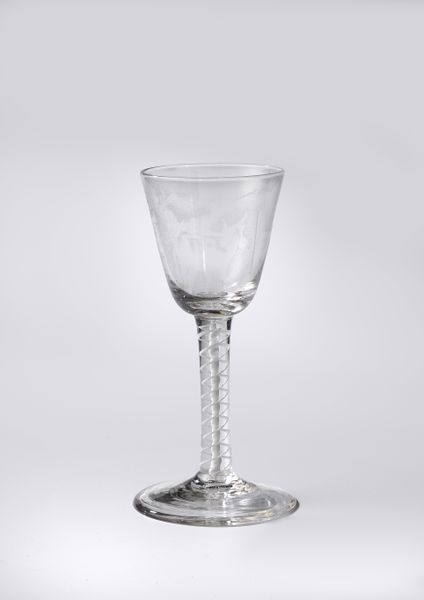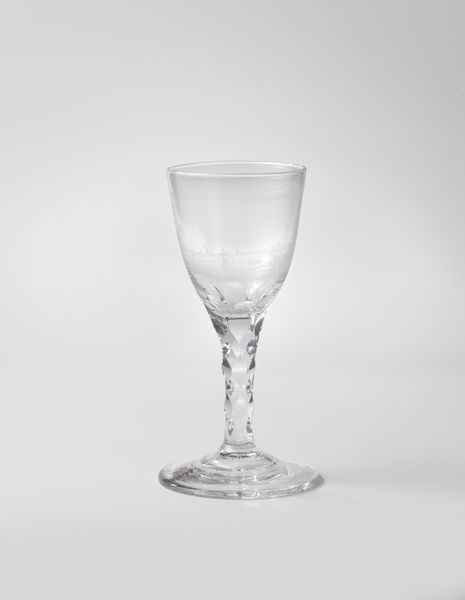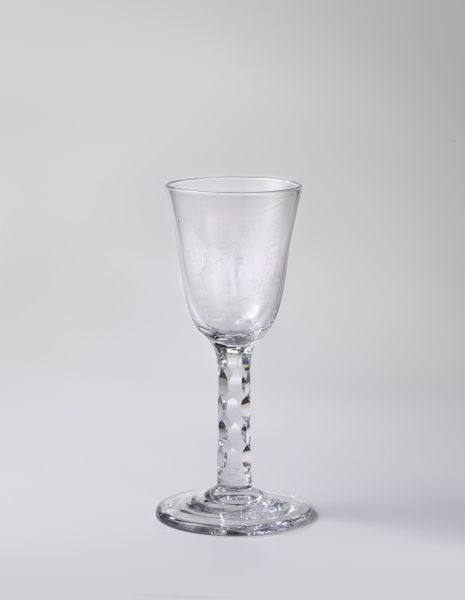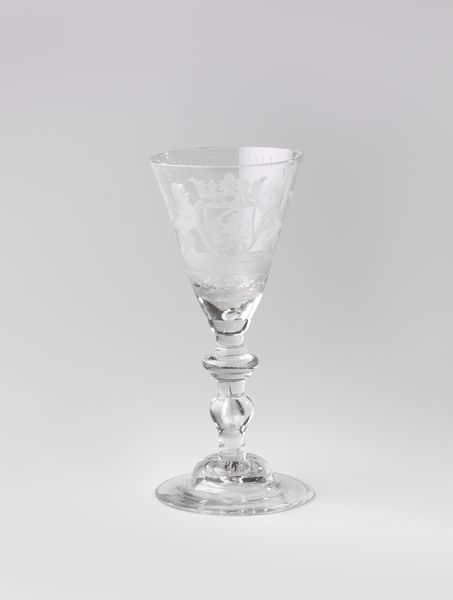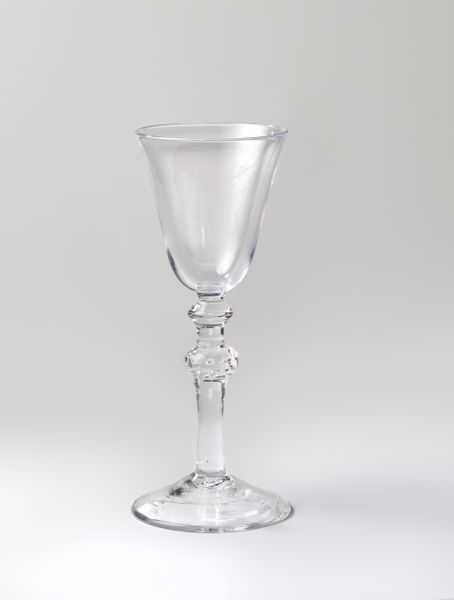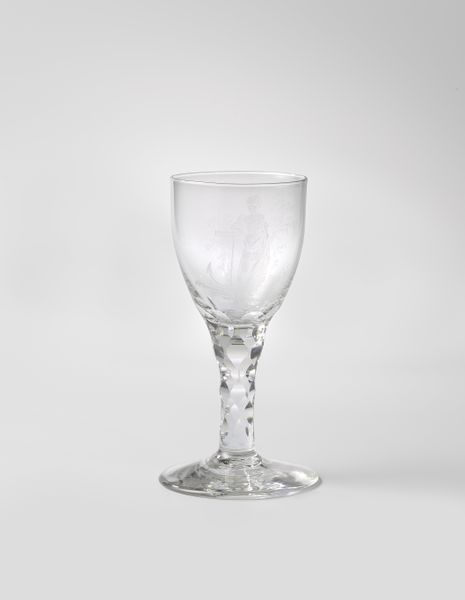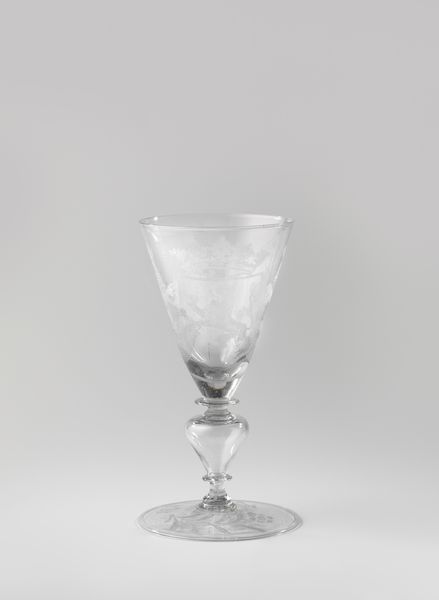
Dimensions: height 15.5 cm, diameter 7.7 cm
Copyright: Rijks Museum: Open Domain
Curator: There’s an almost unsettling serenity about this drinking glass. It makes me think of the quiet decadence preceding a revolution. Editor: And yet it's deceptively simple in its construction, no? We’re looking at a "Slingerglas met een man en vrouw aan tafel"—a drinking glass depicting a man and woman at a table—estimated to have been crafted between 1775 and 1800 by an anonymous artist. Made of glass, of course, and displaying some features we'd associate with Rococo style, that elaborate lightness. Curator: Rococo often feels like a performance, but here the understated imagery of the couple—a simple, perhaps familial scene etched into the glass itself—gives it a quiet intimacy. It is the type of scene that could easily get broken if one lifts their voice, as if to question whether it's natural and innocent, or forced. The swirl in the glass adds to that distortion. The question of "can you see through it?" haunts me. Editor: That’s interesting. I immediately thought about who had access to objects like these at that time, and I wondered about the social function the glass would have served. Who were those families being portrayed? To whom were the messages or codes within this piece accessible? It hints at class dynamics and conspicuous consumption even within its restraint. Curator: Right. Beyond the specific couple, consider how dining rituals functioned symbolically. Glassware signified sophistication and privilege. The images subtly affirm social standing. Drinking could cement allegiances or alliances, both personal and political. A silent act, and performative nonetheless. The twist in the glass brings both focus and confusion in one's own reflection in its contents, depending on your state, the drink would be both an answer and a catalyst. Editor: And because of the style, that visual language would have signaled aspirations, alliances with aristocracy, even at a moment when such associations were growing precarious in Europe. Curator: It’s that tension—between the delicate surface and the simmering social unrest of the late 18th century—that fascinates me. It reminds us how even everyday objects are embedded with layered meanings, silently bearing witness to history. Editor: Indeed. Everyday objects become sites of complex dialogue about power, taste, and identity, and sometimes revolution.
Comments
No comments
Be the first to comment and join the conversation on the ultimate creative platform.

